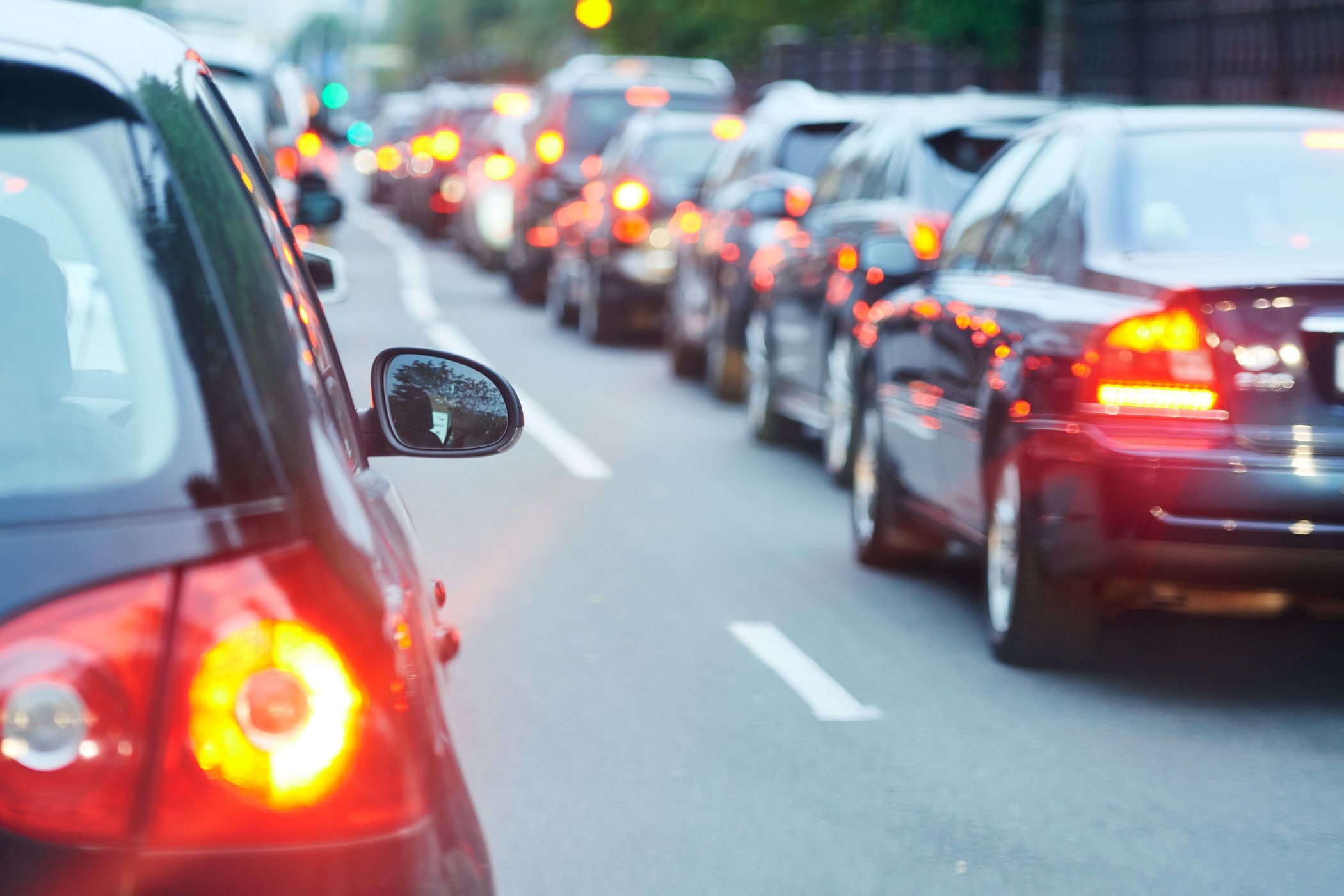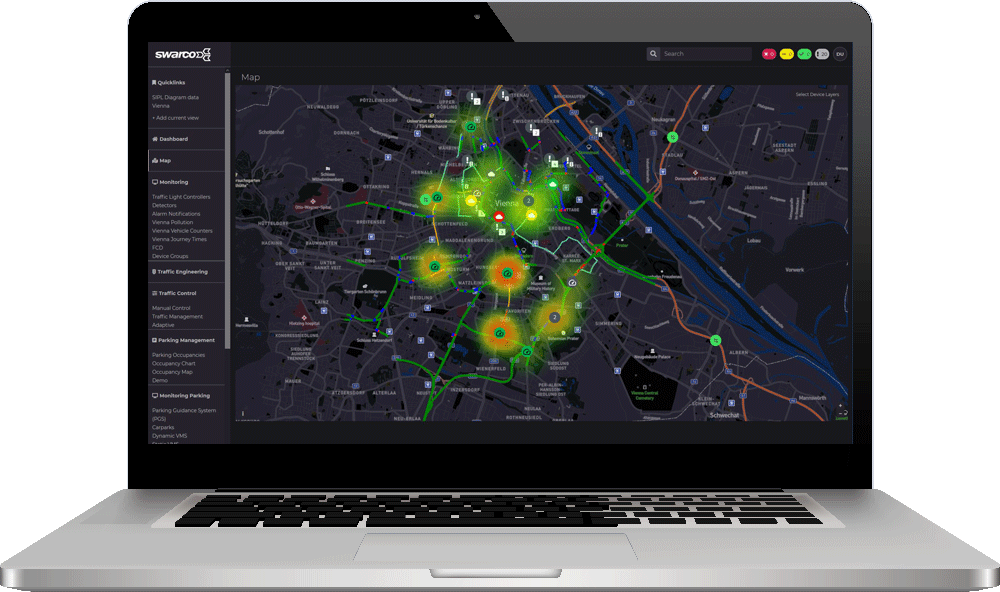4 Traffic and Transport Challenges That Every Major European City Has to Deal With – And How to Do It
The economy and the environment make up the very foundation of life and prosperity in every thriving city. They also constitute two areas that are highly impacted by the characteristics of a city’s transport and mobility infrastructure, and even more so in the future. This article outlines four transport and mobility challenges that major European cities will have to tackle sooner rather than later, and how high-quality Intelligent Traffic Systems can affect the economy and the environment in numerous positive ways.
1. The Urbanization Congestion
The Challenge
It is no secret that more and more people settle in urban areas. By 2030, the urban population is estimated to reach 60 percent. This of course will put traffic and mobility infrastructures under even more strain, more people mean more traffic to manage, and more congestion if it is not managed correctly.
More people partnered with inadequate mobility leads to lowered productivity and major financial loss. In a UNECE report, the annual economic damage associated with delays in passenger and cargo transport as a result of traffic congestion in Europe is estimated at around €100 billion - more than 1 percent of the gross domestic product (GDP) of the European Union. The more time people spend in traffic jams, the more time and money is lost, for the city as well as for the individual.
The other major consequence of urbanization and congestion is of course increased carbonization and air pollution. Air pollution could cause 6 to 9 million premature deaths yearly by 2060 and cost up to 1 percent of global GDP, according to OCED report. The same report states evidence that suggests that the road transport sector is the leading cause with a share of approximately 50 percent of air pollution-related deaths in the European Union and the United States.
So, it is safe to say that if a city’s infrastructure fails to properly manage the traffic situation for a significant number of people, it will negatively affect most aspects of the quality of life, sustainability, and economic development above all.

The role of ITS
A connected and integrated intelligent traffic system (ITS) gives cities the ability to identify where the congestion and carbonization problem areas are located at the moment. It also allows cities to create dynamic strategies that can use the collected data and apply targeted actions before the congestion occurs, improving both the economy and the environment. These targeted actions include:
- Rerouting the traffic: one of the first, and most impacting factors, that can be changed is to reduce the number of cars on the road. ITS makes it possible to trigger new scenarios where traffic is steered away from highly congested areas by adjusting signal plans, displaying messages and changing dynamic signs to restrict access to specific areas either generally or for specific vehicle types.
- Adjust traffic signal plan: In congested urban areas, traffic signal coordination is vital to reduce the number of stops and emissions. With an adaptive traffic control solution, the city can handle coordination at a regional level and adapt local control to the usual traffic conditions.
- Adjust the speed of traffic: Traffic speed is another factor recognized as being linked to pollution levels. Moving vehicles create higher levels of pollutants as speed increases, but they also have an impact when stationary as exhaust emissions concentrate around traffic queues. In urban areas moving vehicles help to disperse high levels of pollutants, but when traffic becomes stationary, this effect is lost, and dangerous levels of pollutants quickly build up. The ability to dynamically manage traffic speed and in that way counteract congestion can therefore be a highly effective tool.
- Prioritization of shared, sustainable services by multi-modal traffic control schemes: Public transport priority at traffic signals is an important measure to increase the efficiency of urban traffic management and better handle ever-growing traffic volumes. It makes public transport more attractive due to faster travel times and improved service regularity. Higher passenger satisfaction is complemented by additional benefits including improved energy efficiency and reduced pollution.
2. The Approaching Automation
The Challenge
Driverless cars have been a popular topic for a long time and new technologies in both communication and robotics enable a future of autonomous vehicles with the aim to reduce accidents, energy consumption, pollution, and congestion while at the same time increase security, mobility, and transport accessibility. Prognoses say that by 2050, 80 percent of the cars on our roads will be semi or fully autonomous.
Vehicle automation is often mentioned as one of the biggest disruptive technologies, both economically and environmentally. But for that to ever happen, the surrounding infrastructure must be adapted in order support the autonomous vehicles when it comes to efficiency and safety. It is simply not enough.

The role of ITS
In a city with autonomous vehicles, the cooperative intelligent traffic system (C-ITS) will function as a central control tower from which traffic and vehicles are managed. On a micro level, the system will increase the vehicle’s awareness when it comes to unforeseen events, pedestrians, bicycles, and other vehicles. On a macro level, it will be the C-ITS that allow the city to create the eco-system in which all autonomous vehicles will communicate. To ensure a successful deployment of autonomous vehicles, there are two main components that must be implemented – connectivity and big data.
A connected infrastructure is key for the design and certification procedures as well as for testing environments that need to be deployed. Within this scenario, the connectivity between the infrastructure and the vehicles is necessary also to ensure operational conditions in the transition period which can last for decades.
Collaborative schemes of traffic management can also greatly improve the road network through performance exploiting a two-way communication, then interaction, with single vehicles driving on the road. For this reason, a minimum set of data needs to be shared between vehicle and infrastructure to ensure a seamless travel experience.
Once autonomous vehicles are widely operational, not only will consumer preferences around car-ownership transform but also traffic management will need correction. Moreover, with the evolution towards automated mobility, the precise definition and compliance of the scenarios where the human-machine handover can take place are more and more critical.
In conclusion, collaborative traffic management is the only way to create the necessary conditions for the reliability of the planned travel time, and therefore the connectivity is a prerequisite for successful automated driving deployment.
3. MaaS: from traditional transport modes to micro-mobility
The Challenge
We have seen a surge of micro-mobility as a service (MaaS) around the world in the last decade. From navigation apps like Waze and bike-sharing services to electrical scooters apps and ride-hailing services. Most of these services are provided by global actors that have the same offer regardless of local traffic systems and prerequisites.
This can cause problems for cities that operate in information silo systems that are unable to freely communicate with other information management systems, and where all communication takes place vertically. These cities are unable to integrate the services into their own infrastructure and therefore the cities will start to lose control over the traffic situation with an overflow of unintegrated MaaS. In this scenario, instead of becoming a catalyst for less traffic and less carbonization, the micro-mobility services will cause more congestion and pollution since the traffic system in place does not treat it as a part of the transport infrastructure.

The role of ITS
With a fully connected ITS, all MaaS stakeholders can be integrated into the city’s infrastructure and thus become a natural part of the traffic eco-system, this makes it easier for the consumers to use the services, and possible for the city to maintain vital control over the mobility situation.
Cities can of course also offer their citizens mobility services of their own. But in order to do this, the city needs a deep understanding of how their citizens travel, how the MaaS should be set up in order to get the best results, and how the service will affect other aspects of the traffic situation. With the various tools, such as the previously mentioned possibility to predict the traffic and then act on those predictions, it is imperative and a prerequisite for a city to have a backbone with a fully connected and integrated ITS in order to build a successful MaaS strategy and to guarantee the quality of service and the reliability of travel times across the network.
4. Extracting Value from Data
The Challenge
Data is the new currency. This is a new truth in a lot of industries, and traffic management is one of them. Although for the collected data to have any bearing, it is essential to be able to extract value from it. You may know what the data means, but if you do not know what to do with it, the data is worthless.
For most cities that still work in closed-off silo systems, this is the case. In silo systems, the data cannot pass between different departments or systems since it is locked up in the isolated traffic system. This makes it virtually impossible to exchange any value from the collected data.

The role of ITS
In this case, the role of ITS cannot be understated. One of the very core purposes of an integrated system is to be able to share and analyze data with the sole target to extract insights, but also knowledge of what to do with those insights. With ITS, the city can extract value from the data on several different levels:
- Descriptive level: The data is presented in various dashboards such as heatmaps
- Predictive level: Here, the data is used to make traffic forecasts and predictions both about the current and future traffic situation
- Prescriptive level: On this level, the data is used to take actions to mitigate and avoid negative effects, maximizing the traffic and transport conditions for all citizens.
Conclusion
These areas are, as discussed, major mobility challenges that that can affect the environment and economy in several negative ways. But as also stated, they simultaneously constitute opportunities to improve mobility and transport conditions for cities that take the appropriate actions at the appropriate time. And an Intelligent Traffic System can be a powerful tool that helps cities not only solve problems but also build a modern, integrated, safe, and sustainable mobility management infrastructure for the people.
SWARCO is a growing international group providing the complete range of products, systems, services, and solutions for road safety and intelligent traffic management. Read more about SWARCO’s ITS solutions.